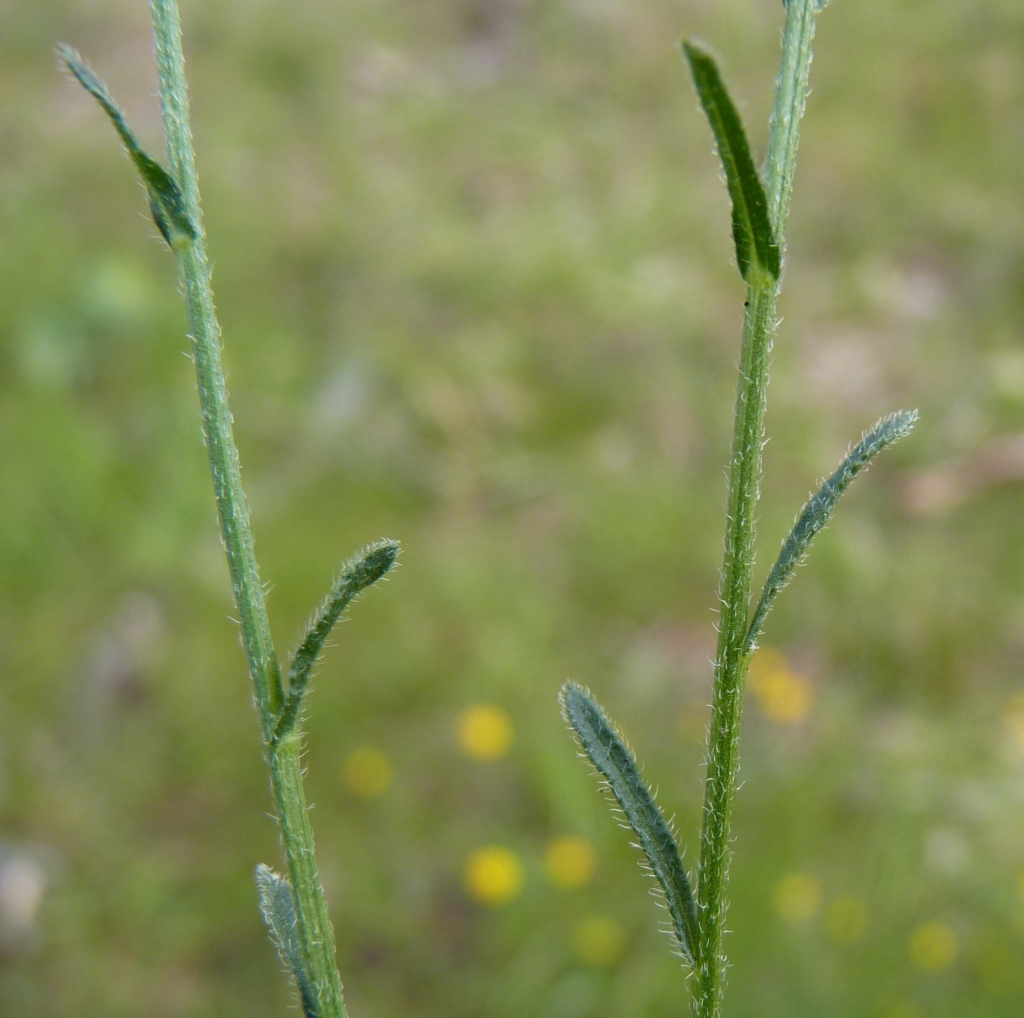Calotis lappulacea
Benth. Yellow Burr-daisySlender, erect or straggling, much-branched perennial, 20–50 cm high; stems and leaves sparsely hirsute to strigose. Leaves sessile, oblong to narrow-obovate, 4–20 mm long, 1–4 mm wide, entire, distally toothed, or rarely, pinnatifid. Capitula 3–8 mm diam.; involucral bracts oblong, 2.5–4 mm long; ray florets c. 40–60, yellow, 2–4 mm long; disc florets sterile. Cypsela body c. 1.5 mm long, tuberculate (occasionally the tubercles coalescing to form irregular lateral ridges), pale to reddish-brown; major awns 2, diverging at right-angles to plane of cypsela faces, 1–2 mm long, barbed near apex; secondary awns (to 0.5 mm long), above one angle of cypsela, basally united in a group of 3–6, with usually a single awn above the opposite angle. Flowers mostly Sep.–Jan.
MuM, Wim, VVP, VRiv, RobP, MuF, GipP, CVU, NIS, EGL, EGU, HSF. Also WA, SA, Qld, NSW, ACT. Scattered in dry, rocky country in the east (e.g. Deddick, Suggan Buggan, Tabberabbera, Glenaladale), rare in open woodland near Melbourne (e.g. Toolern Vale) and near the northern end of Brisbane Ranges, and on fertile, loam or clay soils in the north and north-west (e.g. Picola, Chinkapook districts).
Walsh, N.G. (1999). Calotis. In: Walsh, N.G.; Entwisle, T.J., Flora of Victoria Vol. 4, Cornaceae to Asteraceae, pp. 859–864. Inkata Press, Melbourne.
 Spinning
Spinning



